Salt and yeast
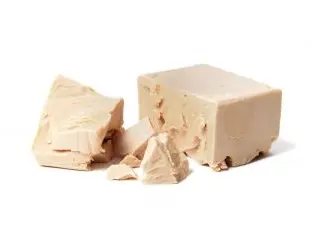
Let's take a look at an old baker's legend: You may have already read that somewhere in a recipe that uses baker's yeast(bread, pastries, leavened doughs in general) it is often specified "Don't put salt in contact with the yeast, you'll kill it (the yeast)"!
Well, that's a belief, and there are many in the kitchen, pastry shop or bakery, but is it true?
Well, that's a belief, and there are many in the kitchen, pastry shop or bakery, but is it true?
74 K 4.3/5 (38 reviews)
Keywords for this post:YeastSaltBakingContactLegendLast modified on: March 15th 2019
Salt and yeast
Let's look at the participants:
- On the one hand, yeast, tiny fungi "Saccharomyces cerevisiae", living beings indeed that will attack the starch of the flour (I simplify) and produce CO2, this is fermentation.
- On the other hand, the salt
Do they react if you put them in contact? Yes, a little: the salt and its hygroscopic side "pumps" the water contained in the yeast and thus softens it a little.
And then the salt will kill the mushrooms? No, not at all, even a little softened, it will keep most of its fermentation power.
In good bakery or pastry training courses, the myth is broken by mixing salt + yeast in a small bowl and letting it rest for a good hour, and you can then see that you get a kind of salty yeast, a little softened, but yeast nonetheless.
All this to tell you that no, the contact of yeast with salt is not dangerous for the yeast, don't be afraid of this, it's just a legend.
However, nothing prevents you from doing what bakers do when you pour your ingredients before kneading: they always manage to avoid putting sugar, salt and yeast in contact with each other, but this is especially in case, at the last moment, you detect a weighing error and try to correct it in a hurry!
To sum up: salt and yeast can be put together in a recipe, it won't prevent your future dough from rising.
- On the one hand, yeast, tiny fungi "Saccharomyces cerevisiae", living beings indeed that will attack the starch of the flour (I simplify) and produce CO2, this is fermentation.

- On the other hand, the salt
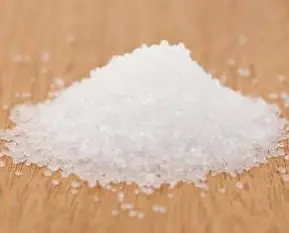
Do they react if you put them in contact? Yes, a little: the salt and its hygroscopic side "pumps" the water contained in the yeast and thus softens it a little.
And then the salt will kill the mushrooms? No, not at all, even a little softened, it will keep most of its fermentation power.
In good bakery or pastry training courses, the myth is broken by mixing salt + yeast in a small bowl and letting it rest for a good hour, and you can then see that you get a kind of salty yeast, a little softened, but yeast nonetheless.
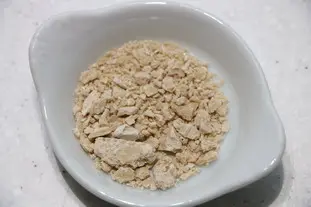 | 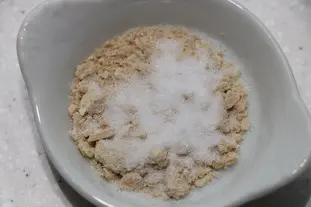 | 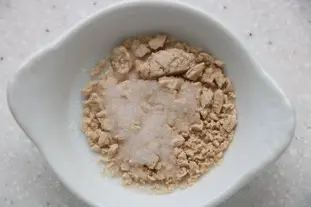 |
| Yeast alone | Yeast with salt | Yeast with salt, 1 hour later |
All this to tell you that no, the contact of yeast with salt is not dangerous for the yeast, don't be afraid of this, it's just a legend.
However, nothing prevents you from doing what bakers do when you pour your ingredients before kneading: they always manage to avoid putting sugar, salt and yeast in contact with each other, but this is especially in case, at the last moment, you detect a weighing error and try to correct it in a hurry!
To sum up: salt and yeast can be put together in a recipe, it won't prevent your future dough from rising.
Lasts posts
Butter vs. grease
We often read in a recipe where a pastry is put into a mould that, just before pouring, the mould should be buttered or greased. But what's the difference between these 2 terms?December 1st 20251,5645
Getting out of the fridge early
Very often when you're cooking, you need to take food or preparations out of the fridge, to use them in the recipe in progress. There's nothing tricky about this: you just take them out of the fridge and use them, usually immediately, in the recipe. But is this really a good method?November 24th 20251,2995
Who's making the croissants?
When you look at a bakery from the outside, you naturally think that in the bakery, the bakers make the bread, and in the laboratory, the pastry chefs make the cakes. It's very often like that, with each of these professions having quite different ways of working, but sometimes there's also one...November 23th 20251,195
Oven height
When we put a dish or cake in the oven, we naturally tend to put it on the middle shelf, and that's what we usually do. But in some cases, this position and height can be a little tricky, so let's find out why.October 8th 20253,4225
The importance of sieving
In recipes that use a fine powder (flour, powdered sugar, etc.), you'll often see the advice to sift before using it. To sift is to pass the powder in question through a sieve (a very fine strainer) before incorporating it into your recipe. It's often advice, but is it really useful?September 3rd 20258,0033
Other pages you may also like
The skin of the almonds
If you like almonds, in their dried fruit version, you must use them quite often in cooking or baking, whether powdered or whole. It is not obvious, but in fact there is 2 kinds of almonds in the market, wholesale with or without the skin. .February 8th 202024 K4.7
Butter doesn't make you fat, unless you eat too much of it.
Whenever I'm discussing cooking and recipes, there is one idea which comes up frequently, like this: "Oh no! But that's got butter in it" (I should add, for the sake of accuracy, that this is something I hear more frequently from women, who are almost all concerned with keeping their figure). ...March 26th 201245 K4.5
The first breads of humanity?
I have already told you in a previous article the beautiful story of the croissants, but do you know what it is about the bread, who "invented" it, where and when? Well, you can imagine that recent discoveries, in 2018, have profoundly changed the history of bread.February 16th 201914 K5
Chive flowers
Did you know that? Chive flowers are not only a beautiful purple color, but they are also edible and delicious.May 29th 201948 K4.4
Burgers and cheeses
A quick look at burgers(article from 2 weeks ago), and in particular the cheese in burgers, many of you have asked me about this, and how to get cheese to melt in your burgers.April 24th 20219,7344.8
Post a comment or question
Follow this page (as 2 people already do)
If you are interested in this page, you can "follow" it, by entering your email address here. You will then receive a notification immediately each time the page is modified or a new comment is added. Please note that you will need to confirm this following.
Note: We'll never share your e-mail address with anyone else.
Alternatively: you can subscribe to the mailing list of cooling-ez.com , you will receive a e-mail for each new recipe published on the site.









